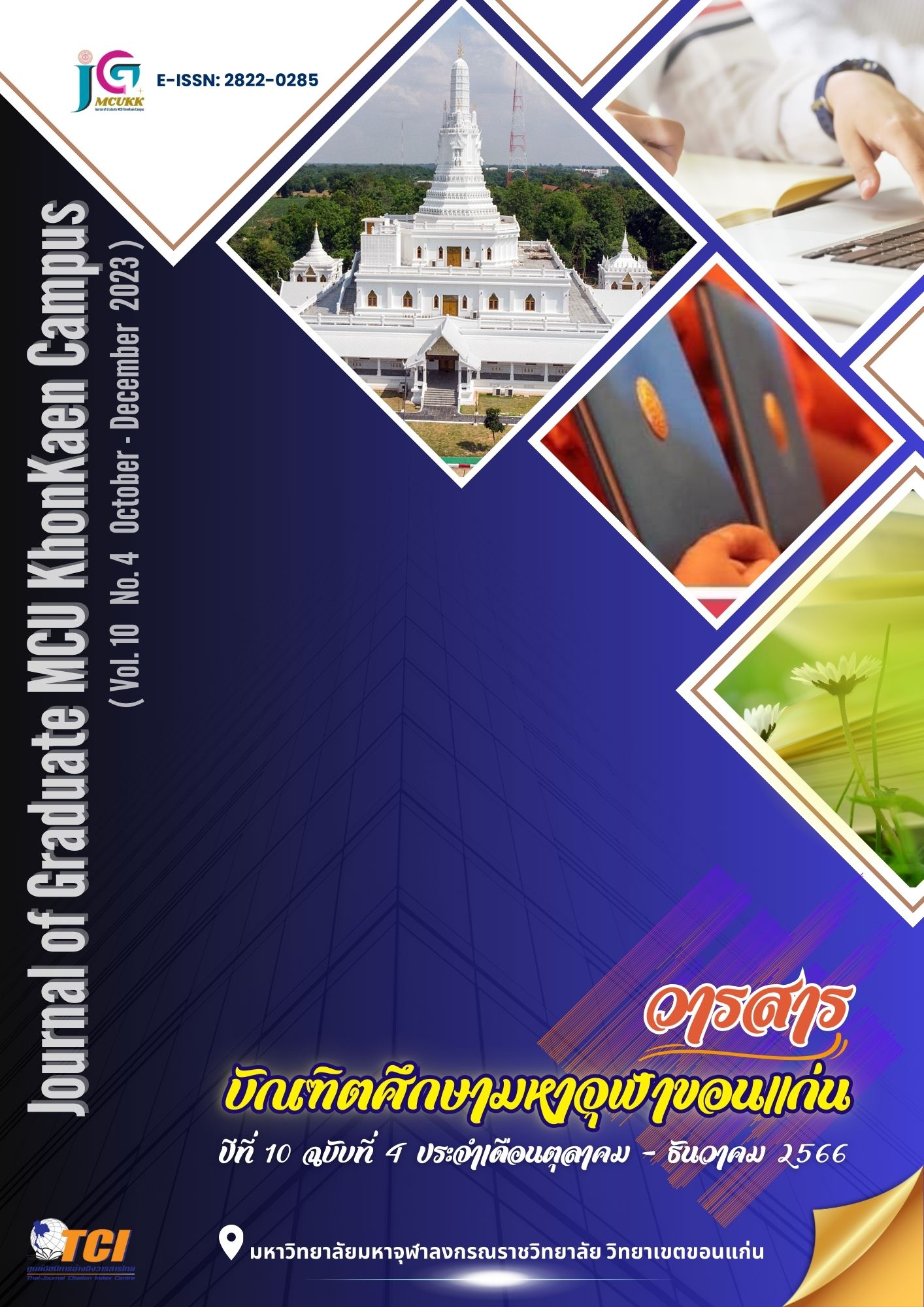การมีส่วนร่วมของประชาชนในการจัดทำแผนพัฒนาท้องถิ่น ขององค์กรปกครองส่วนท้องถิ่น : ศึกษาเฉพาะกรณีองค์การบริหารส่วนตำบลคอนสวรรค์ อำเภอคอนสวรรค์ จังหวัดชัยภูมิ
Main Article Content
บทคัดย่อ
ผลการวิจัยพบว่า
1. ระดับการมีส่วนร่วมของประชาชนในการจัดทำแผนพัฒนาท้องถิ่นขององค์การบริหารส่วนตำบลคอนสวรรค์ โดยรวม อยู่ในระดับปานกลาง พิจารณาเป็นรายด้านโดยเรียงจากมากไปหาน้อย ดังนี้ 1) ด้านการตัดสินใจ 2) ด้านการวางแผน 3) ด้านการดำเนินการ และ 4) ด้านการติดตามและประเมินผล
2. เปรียบเทียบการมีส่วนร่วมของประชาชนในการจัดทำแผนพัฒนาท้องถิ่นขององค์กรปกครองส่วนท้องถิ่นกรณีองค์การบริหารส่วนตำบลคอนสวรรค์ พบว่า ประชาชนที่มี เพศ อายุ การศึกษา และอาชีพ ที่ต่างกัน มีส่วนร่วมในการจัดทำแผนพัฒนาท้องถิ่นขององค์การบริหารส่วนตำบลคอนสวรรค์ อำเภอคอนสวรรค์ จังหวัดชัยภูมิ แตกต่างกัน
3. แนวทางการประยุกต์ใช้หลักพุทธธรรมเพื่อส่งเสริมการมีส่วนร่วมของประชาชนในการจัดทำแผนพัฒนาท้องถิ่น พบว่า 1) ประชาชนได้เข้าร่วมประชุม ร่วมคิด กำหนดแนวทางการพัฒนาเพื่อเสนอ แก้ไข และลดปัญหาของท้องถิ่น โดยใช้หลักเมตตามโนกรรมและหลักทิฏฐิสามัญญตา 2) มีส่วนร่วมในการวางแผนการพัฒนา กำหนดยุทธศาสตร์ จัดเตรียมข้อมูล จัดลำดับความสำคัญของปัญหา และมีส่วนร่วมในการรับฟังการประชุมสภาองค์การบริหารส่วนตำบลโดยใช้หลักเมตตาวจีกรรม 3) มีส่วนร่วมเป็นกรรมการในการดำเนินงานตามแผนพัฒนา อบต. ดูแลสาธารณะประโยชน์ของชุมชนร่วมกัน ป้องกันและปราบปรามยาเสพติดภายในชุมชน โดยใช้หลักสาธารณโภคี และหลักเมตตากายกรรม และ
4) ประชาชนมีส่วนร่วมในการเสนอแนะแนวทางการดำเนินงานของ อบต. ติดตามและประเมินผลแผนพัฒนาท้องถิ่น ความคุ้มค่าของแผนจากงบประมาณที่ใช้ โดยใช้หลักสีลสามัญญตา
Article Details

อนุญาตภายใต้เงื่อนไข Creative Commons Attribution-NonCommercial-NoDerivatives 4.0 International License.
เอกสารอ้างอิง
กรมส่งเสริมการปกครองส่วนท้องถิ่น. (2548). คู่มือการจัดทำแผนพัฒนาท้องถิ่น. กรุงเทพฯ: กรมส่งเสริมการปกครองส่วนท้องถิ่น.
พระกิตติชัย ปญฺญฃฃาธโร (สินคง). (2557). การมีส่วนร่วมของประชาชนในการพัฒนาแผนยุทธศาสตร์ขององค์การบริหารส่วนตำบลท่าโพธิ์ อำเภอเมือง จังหวัดพิษณุโลก. (วิทยานิพนธ์พุทธศาสตรมหาบัณฑิต). พระนครศรีอยุธยา: มหาวิทยาลัยมหาจุฬาลงกรณราชวิทยาลัย.
พวงทอง โยธาใหญ่. (2545). การมีส่วนร่วมของประชาชนในการจัดทำแผนพัฒนาท้องถิ่นเชียงใหม่ : กรณีศึกษาองค์การบริหารส่วนตำบลในจังหวัดเชียงใหม่. (การค้นคว้าแบบอิสระปริญญามหาบัณฑิต). เชียงใหม่: มหาวิทยาลัยเชียงใหม่.
สถาบันพระปกเกล้า. (2556). การมีส่วนร่วมในการจัดทำแผนพัฒนาและงบประมาณสำหรับท้องถิ่น. กรุงเทพฯ: สถาบันพระปกเกล้า.
สำนักงานเลขาธิการสภาผู้แทนราษฎร. (2550). รัฐธรรมนูญแห่งราชอาณาจักรไทยพุทธศักราช 2550. กรุงเทพฯ: สำนักงานเลขาธิการสภาผู้แทนราษฎร.
Miles M. B. & Huberman A. M., (1994), Qualitative Data Analysis An Expanded Sourcebook. Thousand Oaks, CA Sage Publications.
Yamane. Taro. (1967). Statistics: An Introductory Analysis. New York: Harpen and Row.

